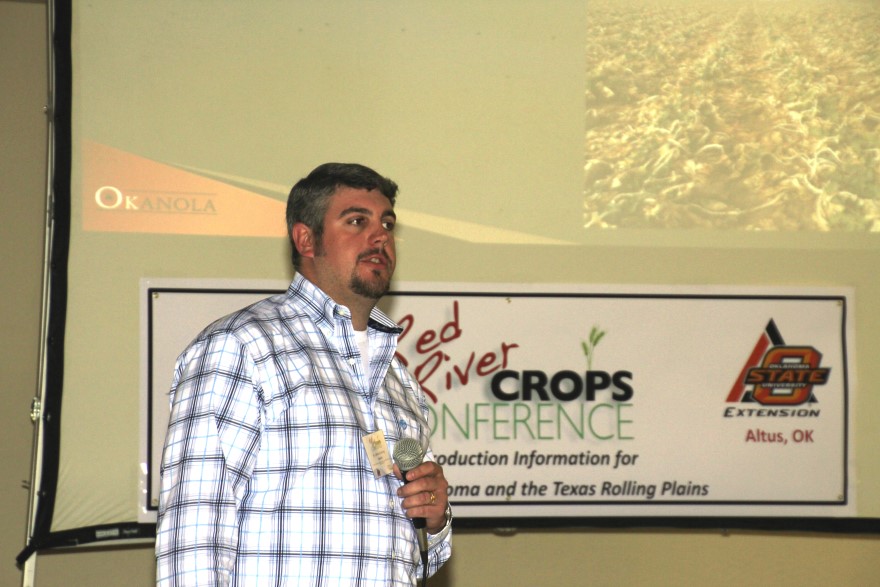
Agricultural News
2015 Winter Canola Crop Holding on for Rain
Tue, 27 Jan 2015 16:48:29 CST

The state's winter canola crop is in decent condition, but it could swing either way depending on Mother Nature. Oklahoma State University Winter Canola Extension Specialist Joshua Bushong said much of the crop remains in good shape.
"For the most part, the guys that had a decent stand going into winter, still have a decent stand right now, so that has been pretty positive," Bushong said. "We had a little bit of moisture to handle some of the freezes this winter."
Radio Oklahoma Network Farm Director Ron Hays is covering the Red River Crops Conference in Childress, Texas, where he caught up with Bushong. Click or tap on the LISTENBAR below to listen to the full interview.
With the ongoing drought, there is limited moisture in the soil profile. Bushong said this crop is holding on waiting for more rain. With several days over 70 degrees this week, he is starting to see some regrowth and the crop is starting to break dormancy. This is also spurring insect and weed pressure. Bushong is seeing Army Cut Worms and Diamond Back Moth larvae in fields in north central Oklahoma. He encourages farmers get out and scout their fields and apply an herbicide or insecticide before the crop bolts. If farmer wait too long, Bushong said they will lower their yield potential.
In looking at the 2015 crop, Bushong said canola acres in Oklahoma will be significantly down from last year. He said the planting conditions in late September into October was a tough time and it was difficult for farmers to choose to plant the crop, so a lot of canola was not planted in western and southwestern Oklahoma. He estimates 150 thousand acres of winter canola was planted, about 100 thousand acres less than last year.
In looking at the overall southern plains region, Bushong predicts winter canola acres mostly increased. He estimates an increase of 60 to 80 thousand acres in Kansas with a lot of new acres planted in the southern tier of counties. He also predicts canola acres increased in Texas by approximately 15 to 20 thousand acres.
Bushong believes there is still a lot of interest in growing the crop in the southern plains region, but producers had to make tough choices at planting. Farmers were looking at the higher input costs to grow the crop, the challenge in getting crop insurance coverage in areas, having lower t-yields due to the ongoing drought and the lack of soil moisture at planting. He said all of these factors made it difficult to plant canola this year.
WebReadyTM Powered by WireReady® NSI
Top Agricultural News
More Headlines...




















